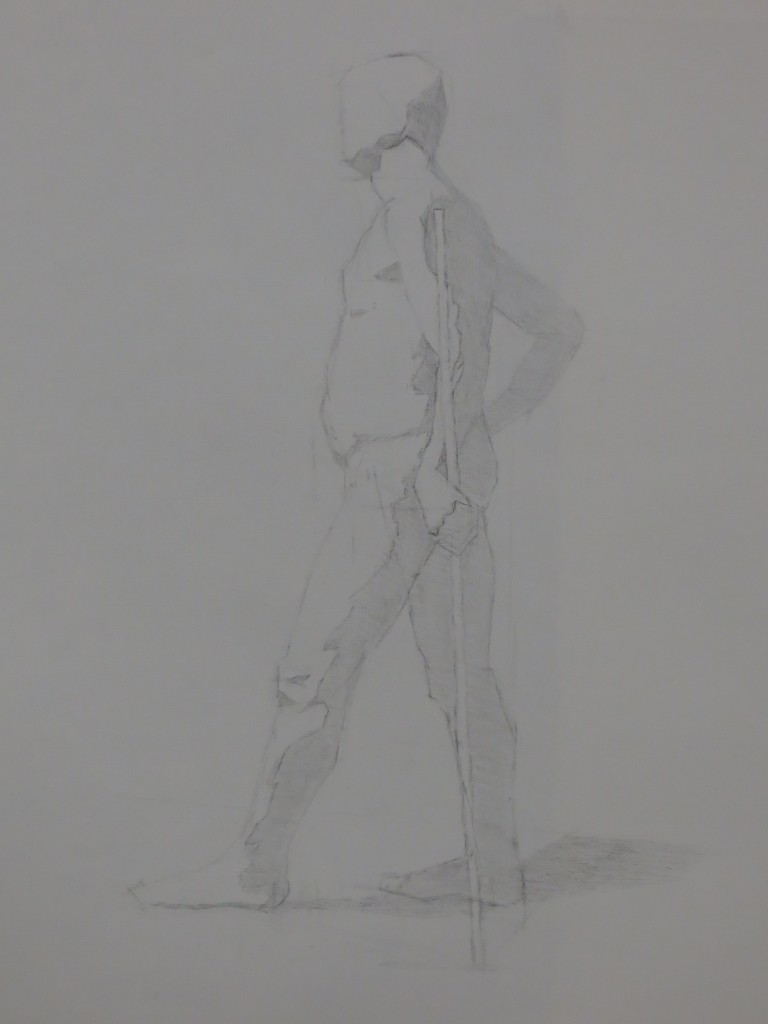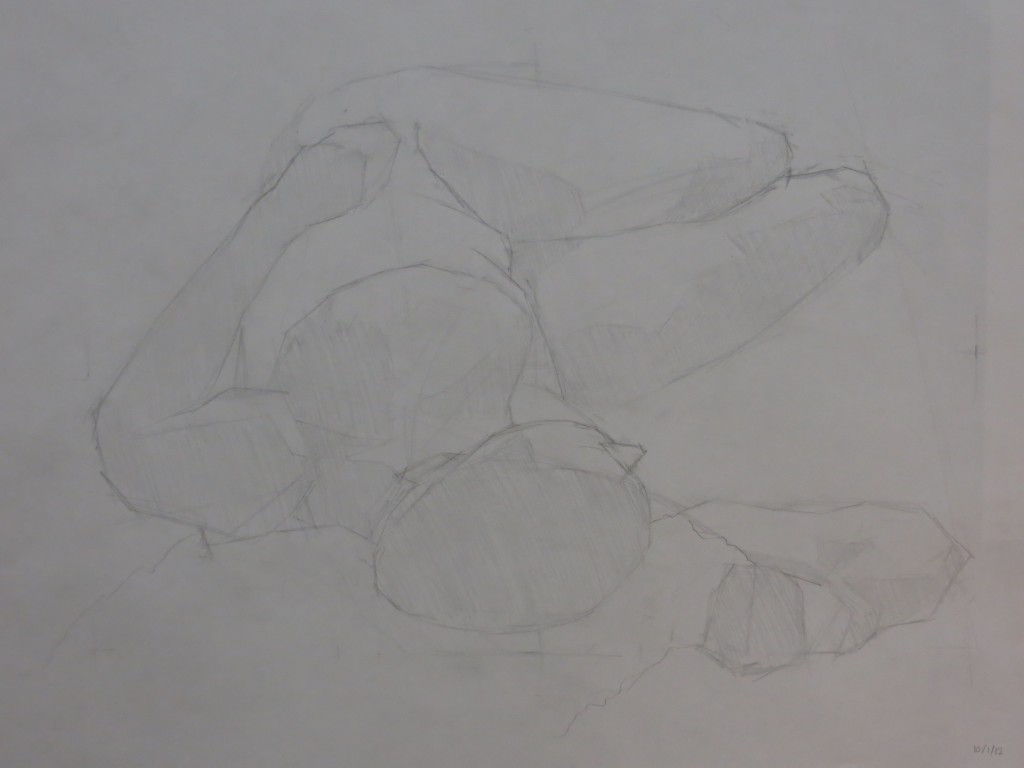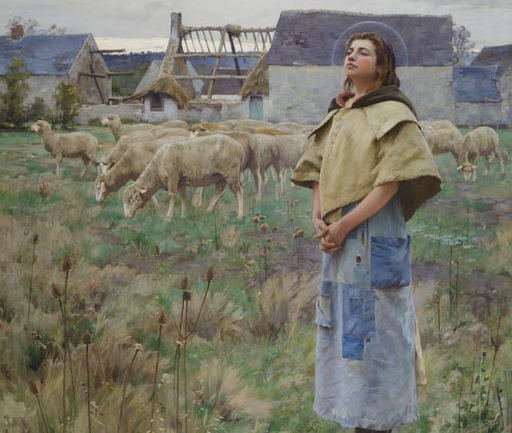Working on a fun, foreshortened view this week in the life room . . .
Teaching Plein Air
I’ve been teaching my son to paint. We started a painting on vacation over the summer and finally got around to finishing it this weekend. A friend suggested that we work together on the same canvas and this has really helped with teaching and learning – for both of us!
Analytical Leaf Drawing
Now even the trees have something to fear. Stayed up late to finish up my analytical leaf drawing, a la Barnestone. Didn’t have a light table, so I jury rigged one with my glass palette on the easel with a light shining through from the back.
Some Enchanted Evening
Dinner this evening at the home of Gary Faigin and Pamela Beylea with students from the three ateliers. Met a bunch of great people as we watched the sun set over Ballard and lifted our glasses to Canadian Thanksgiving and spied on the neighbor’s Mooncake Festival. Food was fantastic – I need to get the recipe for the lemon-almond cake which was to die for. Got to see a bunch of Gary’s art up close and learned many times over how much I still have to learn. I drove home deep in contemplation of what art means to me today and what it could mean in the future. I know I need to spend lots more time making art.
Fun fact from the evening: Samuel Morse, the inventor of the telegraph, was actually an accomplished artist, who was trained in Europe, but left art to become an inventor.
The Secret of a Full Life
“The secret of a full life is to live and relate to others as if they might not be there tomorrow, as if you might not be there tomorrow. It eliminates the vice of procrastination, the sin of postponement, failed communications, failed communions, This thought has made me more and more attentive to all encounters, meetings, introductions, which might contain the seed of depth that might be carelessly overlooked. This feeling has become a rarity, and rarer every day now that we have reached a hastier and more superficial rhythm, now that we believe we are in touch with a greater amount of people, more people, more countries. This is the illusion which might cheat us of being in touch deeply with the one breathing next to us. The dangerous time when mechanical voices, radios, telephones, take the place of human intimacies, and the concept of being in touch with millions brings a greater and greater poverty in intimacy and human vision.”
From Anaïs Nin, The Diary of Anais Nin, Vol. 4: 1944-1947
, pp. 148-149.
This quote reminds me of the Wordsworth poem, The World Is Too Much With Us, which Juliette brought to our lunch time discussion at the Carkeek Park picnic. It is so interesting how Nin and Wordsworth, separated by almost 150 years, have such similar perspectives, and how both are even more applicable today.
Analytical Bottle Drawing
We invited our good friends, Chris and Marty, over to help drink the bottle of prosecco that I wanted to use for my Barnestone assignment. The bottle was tall and had these gorgeous curves that complemented my medium height Quinta dos Rouges and my short, but equally curvaceous Perrier bottle. The assignment involved six gestural drawings of each bottle, followed by a detailed, measured drawing of an ensemble of the three bottles on a single page. All told, I spent about 17 hours on the measured drawing, not including the time to drink the prosecco.
Juliette says the point of the assignment is to learn how to see relationships that tie the drawing together, to understand how to break down the structure of the object, to develop line quality, and to work the entire picture at once instead of marching around the contour.
Open Studio
Did this three hour block in at the Sunday open figure studio.

Atelier Picnic at Carkeek Park
Today members of the Aristides and Kang-O’Higgins Ateliers made their way through penetrating dampness and fog to Carkeek Park for the annual atelier picnic. Most years, the beach on the Puget Sound in September is foolproof with blue bird days and Indian summer. Not this year, but our pencils worked and we did laps to keep warm. We kept ourselves busy with analytical leaf drawings and landscapes and beach scenes.
Lunch time brought a lively discussion of this sonnet by William Wordsworth:
The World Is Too Much With Us
The world is too much with us; late and soon,
Getting and spending, we lay waste our powers;
Little we see in Nature that is ours;
We have given our hearts away, a sordid boon!
This Sea that bares her bosom to the moon,
The winds that will be howling at all hours,
And are up-gathered now like sleeping flowers,
For this, for everything, we are out of tune;
It moves us not. –Great God! I’d rather be
A Pagan suckled in a creed outworn;
So might I, standing on this pleasant lea,
Have glimpses that would make me less forlorn;
Have sight of Proteus rising from the sea;
Or hear old Triton blow his wreathèd horn.
After lunch the sun came out and the mountains emerged from the fog.
Steak Salad
Staying up late tonight to smoke some tri-tip for tomorrow’s Atelier picnic at Carkeek Park. If the park were an outdoor restaurant, the menu would say, “smoked tri-tip on a bed of red leaf lettuce with marinated onions, blue cheese, walnuts, and cranberries, tossed with a red wine vinaigrette.”
Frye Museum Field Trip
This afternoon we went on a field trip to see Ties That Bind: American Artists In Europe at the Frye Art Museum. Our assignment was to spend enough time to really absorb and understand each piece, and then pick three to analyze and sketch. The setting at the Frye is very peaceful and I had a great time contemplating the paintings and sitting on the lovely wooden floors with my sketchbook.
Afterwards, we met in the coffee shop where Juliette led a discussion on the role of museums and art in our society. We also talked about the intentionality in the design of the space and I learned that the design of the Madison Studio, where we work at Gage, was inspired by architectural elements at the Frye. Particular attention was paid to the experience of transitioning from the busy outer world to the quiet interior space. At the Fry, architect Richard Sundberg used a reflecting pool and massive doors at the entrance to signify a boundary or threshold to another, more peaceful space. After crossing the reflecting pool, the visitor is gradually acclimatized to the space as the natural light dims along the pathway through the entrance. When designing the Madison studio, it was decided that the transition was equally important in setting the right tone for the quiet and contemplative work. Precious space that could have been used for easels was instead transformed into a quiet anteroom. Curtains adorn the doorway, a Persian rug covers the floor, an earnest wooden table with benches serves as a common meeting point while book shelves lend a scholarly library atmosphere. Behind the table is a collection of beautiful classical plaster casts, all backed up by leafy greenness outside the windows.


